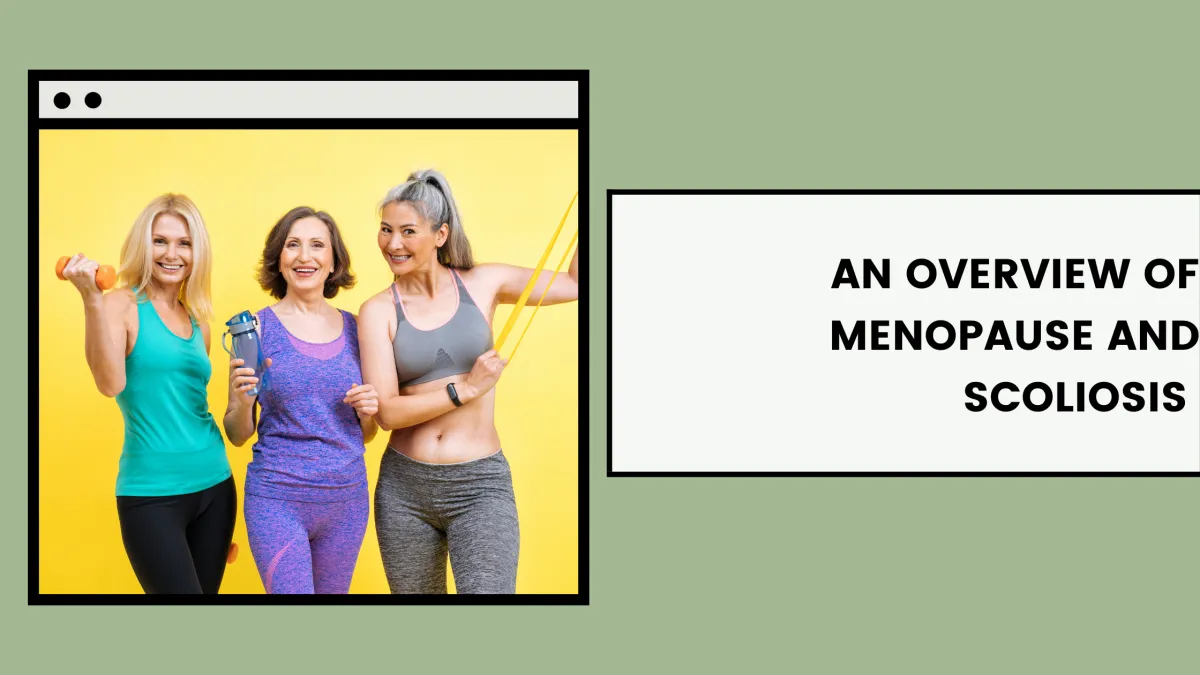Check Out The Latest Blog Posts To Learn More

An Overview of Menopause and Scoliosis | Strength & Spine
Menopause and Scoliosis: What You Need to Know
If you’re a woman with scoliosis, it’s important to understand the interactions between scoliosis and menopause. Although it’s a natural phase of a woman’s life, menopause can be overwhelming or even frightening to think about — especially if you have scoliosis. However, if you know ahead of time what to expect during this time of transition, you can prepare yourself physically and mentally.
What if you’ve already started menopause or perimenopause? It’s not too late! Once you understand how the hormonal and physical changes of menopause may impact your curve, you can have more clarity about what you’re experiencing. And you can find ways to manage your health and protect your curve.
What is menopause?
A natural transition point for women, menopause marks the time when menstrual cycles cease. For most women, this change occurs between the ages of 45 and 55, although some women may start this transition earlier or later.
During menopause, your body will start producing less estrogen and progesterone. When this happens, you may experience various physical symptoms, including hot flashes, sleep challenges, mood swings, and changes in bone density.
How menopause impacts scoliosis symptoms
The hormonal changes that occur during menopause can cause changes in your scoliosis symptoms.
Hormonal changes: Decreasing estrogen in the body can affect bone health. During menopause, many women experience bone density loss. And if you have scoliosis, you’re already at greater risk for osteoporosis, so you may be even more likely to experience fractures and/or curve progression.
Pain: Many women experience uncomfortable symptoms during menopause, such as night sweats and hot flashes. These issues can impact sleep quality and also cause muscle tension that exacerbates chronic scoliosis back pain.
Weight changes: It’s common for women to gain weight during menopause, which can increase stress on bones and joints and make it more challenging to maintain an active lifestyle.
Many women also experience mental and emotional challenges during menopause. These issues can make it more difficult to manage your scoliosis symptoms. If you experience mood swings, depression, or other potential mental health concerns, don’t hesitate to reach out to a professional.
Managing menopause and scoliosis
Scoliosis can make it more challenging to navigate all the aspects of menopause. However, understanding how these two conditions interact gives you more insight into your body and any symptoms you’re experiencing.
Here are some strategies to minimize the challenges of menopause:
Maintain an active lifestyle: One of the best things you can do for your overall health — and your curve — is to stick to a regular exercise routine. Staying active can help you manage your weight, and it offers mental health benefits as well. It’s important to incorporate resistance training into your routine — especially if you have scoliosis. Strength training can help you maintain (and sometimes, even improve) bone density!
Follow a healthy diet: What you eat can also impact your bone density and help you mitigate the increased risk of osteoporosis. Make sure to eat enough calcium and vitamin D, and don’t forget about protein, which helps you maintain muscle mass. Work with your healthcare provider to ensure you’re meeting all of your body’s specific nutritional needs.
Create a pain management plan: Sleep issues, hot flashes, and other symptoms of menopause can increase your scoliosis-related back pain. However, there are many possible pain relief options, including medication and physical therapy. Work with your healthcare team to create a pain management plan that addresses menopausal and scoliosis symptoms.
Consider hormone therapy: Many women choose hormone replacement therapy (HRT) to address some of the symptoms of menopause. However, this approach can be more complicated for women with scoliosis. If you discuss this option with your healthcare provider, make sure they’re aware of your scoliosis and that they take it into account when making a recommendation.
Monitor your curve: Menopause increases the risk of curve progression for many women. It’s very important to see your orthopedist regularly to monitor your curve. They may recommend X-rays and/or bone scans to keep track of what’s happening with your spine.
Although menopause can be challenging for women with scoliosis, it doesn’t necessarily have to be a miserable time of life. Working closely with your healthcare team, eating well, and maintaining an active lifestyle can help you mitigate some of the ways menopause impacts your scoliosis.
Proactively manage your scoliosis symptoms during menopause
Menopause can be a difficult time for many women, and it can be even more challenging if you have scoliosis. However, the more you understand how hormonal and physical changes impact your curve, the better you can prepare and react to keep yourself feeling your best.
Resistance training is a crucial part of maintaining bone health and reducing the risk of curve progression. If you’re not sure exactly how to strength train safely with scoliosis or if you want a completely customized exercise plan, we can help.
Our 1:1 coaching program gives you the chance to work directly with a highly qualified trainer who personally understands what it’s like to live with scoliosis. You’ll get personalized support for your unique curve and goals. Schedule a free discovery call to learn more.
WE ARE
Strong with Scoliosis
Start today on an exercise program that helps you become empowered, strong, and confident in your scoliosis curve.
FIND US
Strength and Spine
Online Sessions and Coaching
We work with clients all over the world
*Please contact us for in-person appointments*

